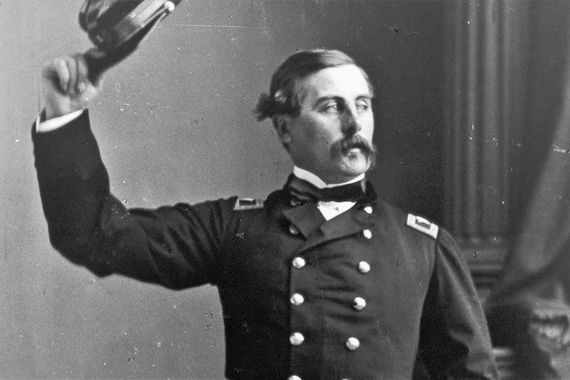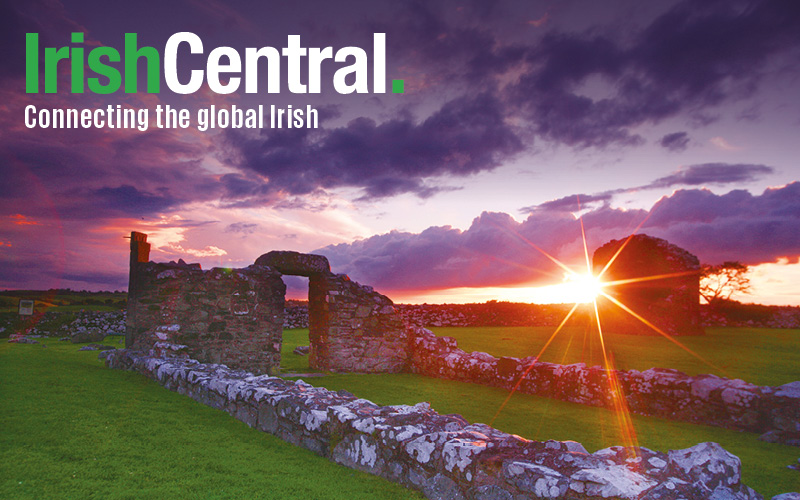On this day, September 22, 1862, President Abraham Lincoln had a preliminary version of his Emancipation Proclamation delivered to the U.S. Senate and House of Representatives.
This was five days after the bloodiest battle in U.S. history, "Antietam" in Maryland. The casualties numbered 4,710 killed and 21,000 wounded, and the Irish Brigade suffered a proportionally higher casualty rate than any other unit in the battle.
Since the Union Army’s defeat at the second battle of Bull Run two months earlier, Lincoln had been thinking about exercising his authority as commander-in-chief to issue an Emancipation Proclamation that would abolish slavery as a “military necessity.”
Secretary of State William Seward convinced him to hold off until the Union Army showed “success” on the battlefield. When Confederate General Robert E. Lee led the Army of Northern Virginia with 39,000 soldiers across the Potomac River into Maryland in early September, Lincoln resolved to himself that he would sign the document once the rebel army was driven back across the Potomac.
The Irish Brigade, alongside other units in General George B. McClellan’s Army of the Potomac, played a decisive role in forcing rebels to flee their positions at Antietam and for Lee to withdraw his troops from Maryland. Now Lincoln could announce his Emancipation Proclamation.
The Irish Brigade had been formed after Bull Run, by “Young Irelander” and “1848 Rising” veteran Thomas Francis Meagher. It was comprised of the 63rd, 69th (“Fighting 69th”) and 88th New York Volunteer Regiments. Nearly all of the soldiers had been born in Ireland or were of Irish descent. Many dreamed of one day fighting the British to free Ireland.
The Irish Brigade had emerald green battle flags emblazoned with a "harp, sunburst and shamrocks.” It also had a Gaelic battle cry - “Faugh a Ballagh” (“Clear the Way”). Brigadier General Meagher commanded the brigade at Antietam.
The fighting began at sunrise. It ebbed and flowed during the early morning, with mounting casualties. The center of the rebel line was at the “Sunken Road” and cornfield behind it. The depressed ground at Sunken Road provided excellent cover. Lee issued an order that it must be held.

Thomas Francis Meagher. (Getty Images)
Later that morning, 1,400 men in the Irish Brigade were called into action at Sunken Road. Meagher’s plan was to march the brigade to the top of a rise so they could fire down on the enemy before charging. We will “give them two volleys, and then go in with the bayonet,” he said.
Meagher would not lead a bayonet charge that day. He was wounded when his horse fell after being shot. Nor would the rebels drive the Irish Brigade from the battlefield. The brigade never wavered. Its lines were decimated, but they inflicted as much punishment as they received.
Withering, intense, close-range fire came from each side. It was described as “a storm of leaden hail.” Back and forth, volley after volley mowed men down. Every color bearer and many officers in the Irish Brigade were shot down. Sunken Road became lined with so many dead rebels that it became known as “Bloody Lane.” Described as a fierce “bloody brawl,” the number of casualties was staggering and horrific.
The Irish Brigade was reduced to 500 men. The 63rd and 69th Regiments had casualty rates near 60 percent. The casualty rate for the 88th was 33 percent.
The 29th Massachusetts was attached to the brigade and on its left flank. The order for the 29th Massachusetts to join the fray was delayed. When they finally engaged by attacking Sunken Road, what was left of the Irish Brigade re-formed its battle lines and joined-in. Before being shot in the head and killed, 88th Regiment Captain John O’Connell Joyce, from Co. Cork, rallied the brigade by exhorting: “Forward boys! For Ireland and St. Patrick!”
The joint charge proved decisive. It caused the rebels to flee. They either ran or were captured. The 29th Massachusetts and Irish Brigade took control of Sunken Road, as other units drove rebels from the cornfield. Watching from a command post a few miles away, General McClellan called it “the most beautiful field I ever saw and the grandest battle.” It turned the tide at Antietam in favor of the Union.
Historians believe that if McClellan had committed his 10,000 men held in reserve after the rebel center was broken, it may have ended the Confederacy and the war. He chose not to send in reserves. Heavy fighting continued in other areas of the battlefield. Troops commanded by Confederate General A.P. Hill arrived from Harper’s Ferry just in time to save the rebel flank from collapsing.
Lee’s Army, hammered but intact, re-crossed the Potomac into Virginia on the next evening. McClellan claimed he had won a “complete victory.” Two years later, he ran against Lincoln for President and lost.
For Lincoln, Antietam was victory enough. His draft Emancipation Proclamation was delivered to the U.S. Congress.
When Lincoln signed the final version of the Emancipation Proclamation on January 1, 1863, it changed the character of the Civil War. “It will be one of subjugation and extermination,” he said. The war was no longer a fight to save the Union. Now it was about an “act of justice” - the abolition of slavery. Four million slaves in the States and parts of States in rebellion against the country were freed that day.
Lincoln wanted to ensure the national aspiration of his Emancipation Proclamation would be enshrined in law. He lived long enough to see Congress pass the Thirteenth Amendment prohibiting slavery. The amendment was submitted to the States for ratification. It was ratified on December 6, 1865, eight months after Lincoln’s death. Progress on race relations in the South, however, began to erode under his successor, President Andrew Johnson.
Throughout the Civil War and at Antietam, soldiers in the Irish Brigade were awarded the Medal of Honor for their heroic exploits. The brigade was known for the bravery, courage and sacrifice it displayed wherever it fought. That character was conspicuous at Antietam. The Irish Brigade’s role in turning the tide at Antietam was crucial to President Lincoln’s issuance of the Emancipation Proclamation and transformation of the United States.
This article was submitted to the IrishCentral contributors network by a member of the global Irish community. To become an IrishCentral contributor click here.




Comments